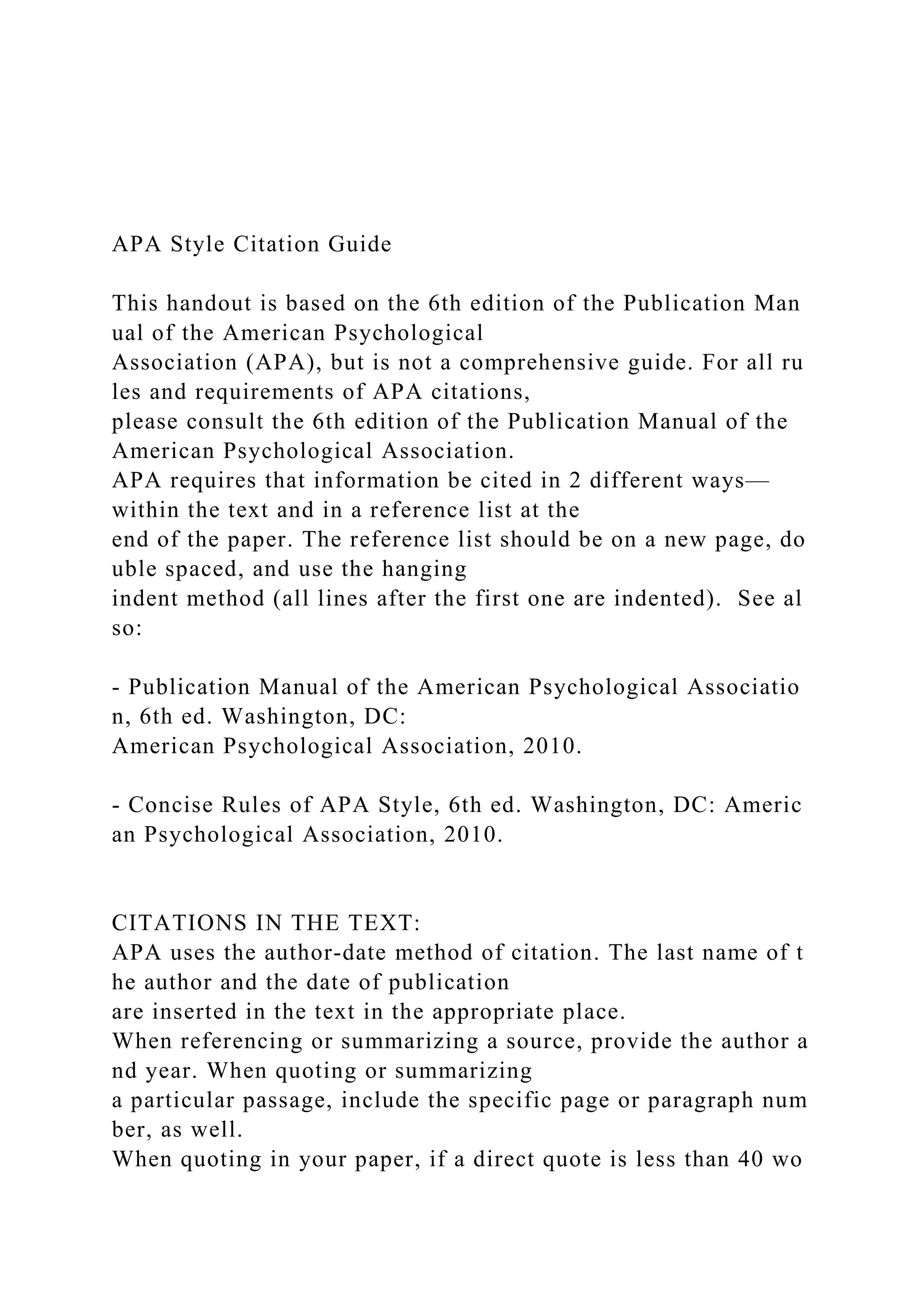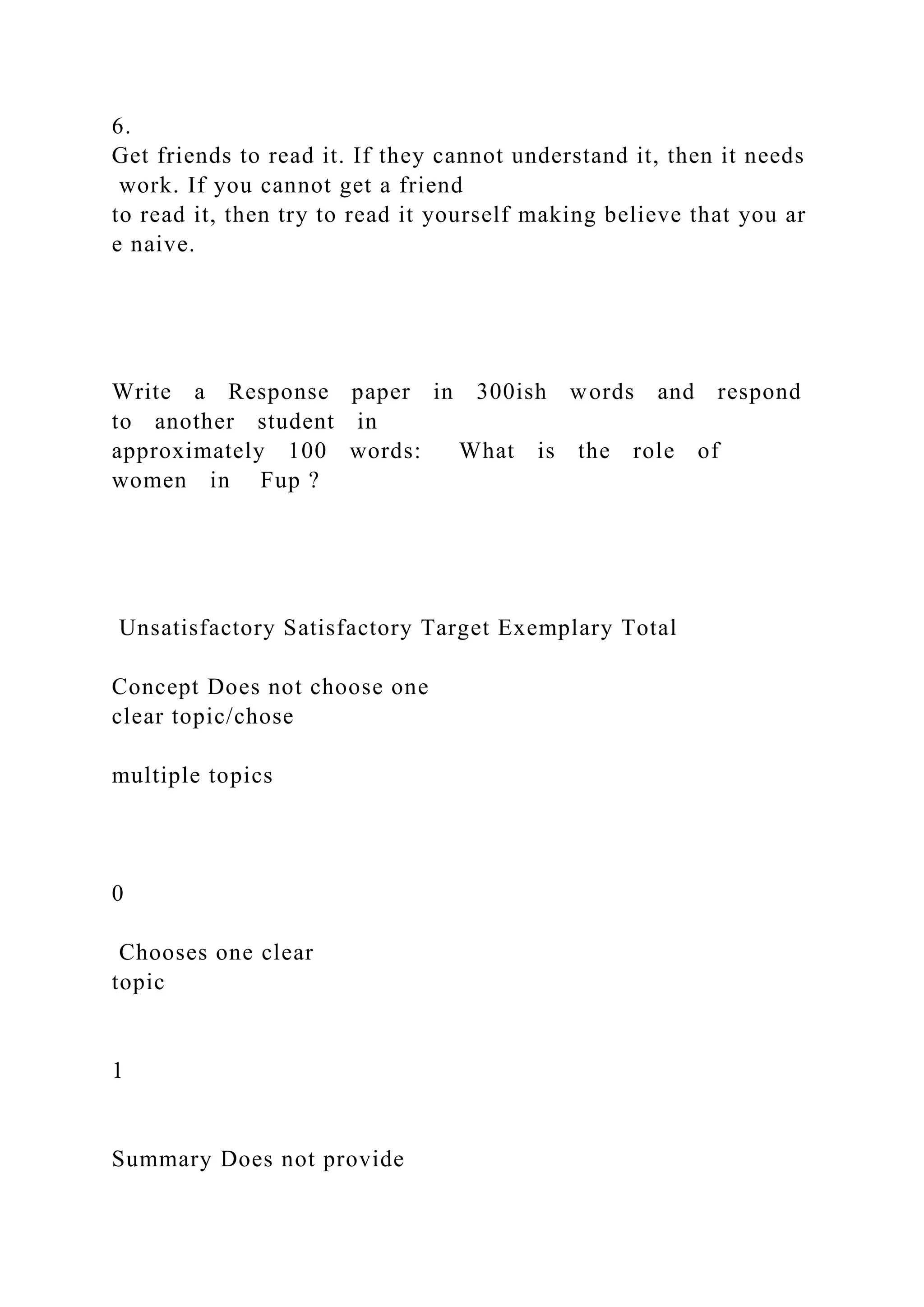This document is a guide on citing sources in APA style, based on the 6th edition of the APA Publication Manual. It covers in-text citations, formatting the reference list, and provides guidance on writing style, language sensitivity, and citation examples for various source types. Additionally, it emphasizes avoiding biased language and includes formatting rules for academic papers.






![Hershey Foods Corporation. (2001, March 15). 2001 Annual Re
port. Retrieved from
http://www.hersheysannualreport.com/2000/index.htm
Book Reviews:
Dent‐Read, C., & Zukow‐Goldring, P. (2001). Is modeling know
ing? [Review of the book
Models of cognitive development, by K. Richardson]. American
Journal of Psychology, 114, 126‐
133.
NOTE: For articles that have a DOI, see Journal Article with D
OI example.
Data Sets:
Simmons Market Research Bureau. (2000). Simmons national co
nsumer survey [Data file].
New York, NY: Author.
Reprint from Another Source:
• Citation in the text:
(Newton, 1998/1999).
• Reference List Citation:](https://image.slidesharecdn.com/apastylecitationguidethishandoutisbasedonthe6th-221014163936-4f06ea76/75/APA-Style-Citation-Guide-This-handout-is-based-on-the-6th-docx-7-2048.jpg)



![n‐ended definitions like "under 16" or
"over 65." Avoid the term elderly. Older person is preferred. Th
e AMA (American Medical Association)
Manual of Style (1997, p. 263) uses these definitions:
•
Neonates or newborns are persons from birth to 1 month of age.
• Infants are children [sic] aged 1 month to 1 year.
•
Children are persons aged 1 to 12 years. . . . They may also be r
eferred to as boys or girls.
•
Adolescents are persons aged 13 through 17 years; also teenager
s, adolescent boys, or
adolescent girls.
•
Adults are persons over 18 years and are referred to as men or w
omen.
DO NOT use . . . When you can use . . .
ethnic labels (e.g., Hispanic)
geographical labels (e.g., Mexican Americans if from Mexico)
"men" (referring to all adults) "men and women"
"homosexuals" "gay men and lesbians"
"depressives" "people with depression"
•
In general, call people what they want to be called, and do not c
ontrast one group of people](https://image.slidesharecdn.com/apastylecitationguidethishandoutisbasedonthe6th-221014163936-4f06ea76/75/APA-Style-Citation-Guide-This-handout-is-based-on-the-6th-docx-11-2048.jpg)














